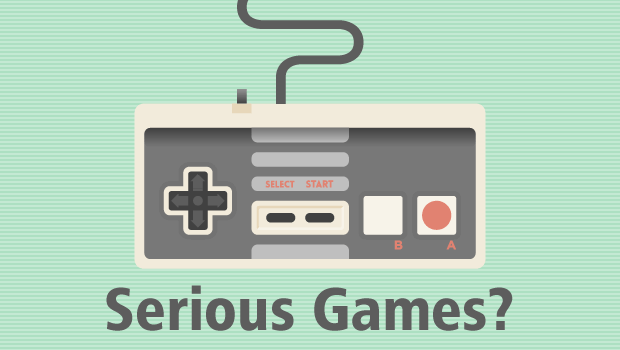Recently I’ve been consulting with a customer on the design of a series of digital learning games for sales training. Most clients have done their research online about serious games, and find the whole gamut of samples, demos, etc. Clients typically have some thoughts about what they feel are serious games and whose game-play and mechanics they intended to emulate. Just one look at their collated ‘portfolio’ was enough to tell me that none of the content in the portfolio was really a serious game. What followed was the diplomatic squashing preconceived ideas about what serious games were in their (client’s) training context.
So what really makes a ‘serious’ game?
A lot of casual game solutions available in the elearning development market claim to be ‘serious’ games. Are they?
| Here are five clues to what serious games are NOT: | |
| 1. | Games that use multiple choice questions are rarely serious games. They can be looked on more as casual games that re-purpose existing question banks or assessments. If the game contains a multiple choice question, its a casual game. |
| 2. | Games that provide discrete and not continuous feedback are not serious games. A game must provide continuous feedback to the learner; this is in contrast with feedback as a part of question/answer interaction, which is typical of discrete feedback. |
| 3. | Games that do not provide user immersion. Serious games are immersive, and provide sophisticated user experience and engagement. Casual games do not aim for high immersion, but are rather focussed on a simpler environment and mechanics. |
| 4. | Games that do not promote discovery of the game mechanics and environments. Games inherently promote a discovery type of learning, this learning happens through the staged progression of skills. In gamer terms, these are called ‘levels’. To advance through the game, one must demonstrate mastery of skills, leading to the discovery of further game-play attributes and mechanics. |
| 5. | Games that have a single repeatable path to victory. These aren’t ‘serious’ games, but puzzles. You don’t really play and win with such ‘games’, rather you ‘solve’ them. Interesting in themselves, but not serious games. |
| A game will typically include the following elements: |
| 1. Environment |
| 2. Objects |
| 3. Rules |
| 4. Rewards/Punishment |
| 5. Luck/Chance |
The game-play and mechanics are a combination and result of these elements. If you are evaluating a learning game ask if it contains all of these elements and how they interact with each other; the more complex the interaction the more the game veers from casual to serious. You can read more about casual games in our whitepaper. In follow-up posts I’ll be exploring more aspects of casual and serious games.



















